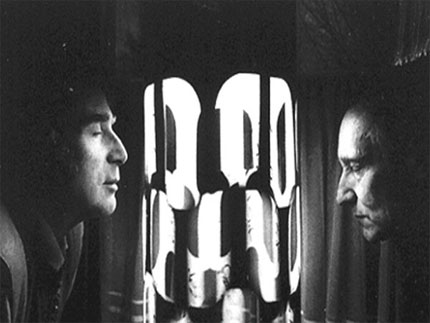User:Stonestone/secondessayfort2stone: Difference between revisions
Stonestone (talk | contribs) |
Stonestone (talk | contribs) |
||
| Line 12: | Line 12: | ||
* Examples of people's experiences/facts | * Examples of people's experiences/facts | ||
====Dreamachines==== | ====Dreamachines==== | ||
In 1960s, the artist Brion Gysin invented Flicker which is also known as Dreamachine, a stroboscopic flicker device that produces visual stimuli. The dreamachine was made from a cylinder with holes in different shapes and sizes in the sides, with a light bulb in the centre of the cylinder. Putting on the record turntable, rotating at 78 or 45 revolutions per minute, allows the light to come out from the holes at a constant frequency of between 8 and 113 pulses per second. This range corresponds to alpha waves, electrical oscillations normally present in the human brain while relaxing. <br /> | In 1960s, the artist Brion Gysin invented Flicker which is also known as Dreamachine, a stroboscopic flicker device that produces visual stimuli. The dreamachine was made from a cylinder with holes in different shapes and sizes in the sides, with a light bulb in the centre of the cylinder. Putting on the record turntable, rotating at 78 or 45 revolutions per minute, allows the light to come out from the holes at a constant frequency of between 8 and 113 pulses per second. This range corresponds to alpha waves, electrical oscillations normally present in the human brain while relaxing. <br /> | ||
http://www.evsc.net/v8/wp/wp-content/uploads/2010/09/dreamachine.jpg<br /> | http://www.evsc.net/v8/wp/wp-content/uploads/2010/09/dreamachine.jpg<br /> | ||
In | In | ||
Concepts of Dream Machines(1.How it makes efforts on brainwaves; 2. Relationship with Lucid Dream;) | |||
====Other Works of Space-out Experiences (spacious/light installations)==== | ====Other Works of Space-out Experiences (spacious/light installations)==== | ||
Revision as of 11:34, 30 March 2016
Space-Out:Nosebleed
Visualisation of Space-Out
Introduction
- Prototype of Nosebleed
- Space-Out in my opinion
- Main Point: How Nosebleed shows Space-Out
Space-Out Experience
Brain Waves
- Brief introduction of 4 types of brain waves
- Alpha wave
- Lucid Dream (My personal opinion of Space-out)
- Examples of people's experiences/facts
Dreamachines
In 1960s, the artist Brion Gysin invented Flicker which is also known as Dreamachine, a stroboscopic flicker device that produces visual stimuli. The dreamachine was made from a cylinder with holes in different shapes and sizes in the sides, with a light bulb in the centre of the cylinder. Putting on the record turntable, rotating at 78 or 45 revolutions per minute, allows the light to come out from the holes at a constant frequency of between 8 and 113 pulses per second. This range corresponds to alpha waves, electrical oscillations normally present in the human brain while relaxing.

In
Concepts of Dream Machines(1.How it makes efforts on brainwaves; 2. Relationship with Lucid Dream;)
Other Works of Space-out Experiences (spacious/light installations)
- James Torre (volcano and others)
- Sun
- Onion Lights
- Bi-Assosiation Images
Nosebleed
- Space-out of me
- Specific Prototype (what)
- Concept of Images :(--->1. Information-Enfropy; Figue-Ground; Signal-Noise... 2.Skies; 3. Relationships between it and above works+concepts)
- Concept of Audios: (--->1. Amient Music and environment sounds...; 2. How it works on images; 3. Relationships between it and above works+concepts)
Feedback from the Others(will be here in the near future)
Conclusion
- Why+what+how
Reference
Nic Sheehan, Flicker, 1997, Documentary, 1:12:02
B.C. ter Meulen D. Tavy B.C. Jacobs, From Stroboscope to Dream Machine: A History of Flicker-Induced Hallucinations, Eur Neurol 2009 pp316–320
Thomas Budzynski, Ph. D., The Clinical Guide to Sound and Light, 2006
David Siever The Application of Audio-Visual Entrainment for the Treatment of Seniors 2004
Luciana Haill ICT & Art Connect : Revelations by Flicker, Dreamachines and Electroencephalographic Signals in Art
